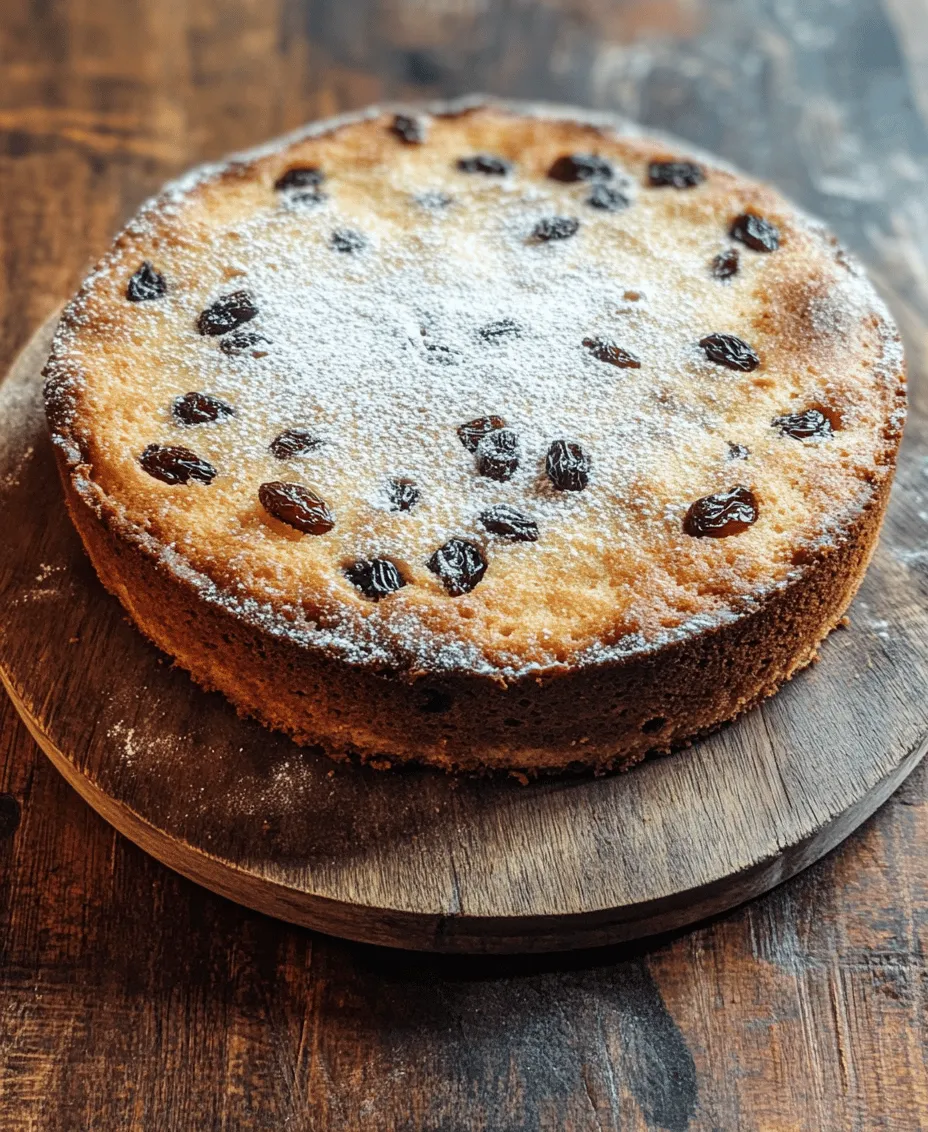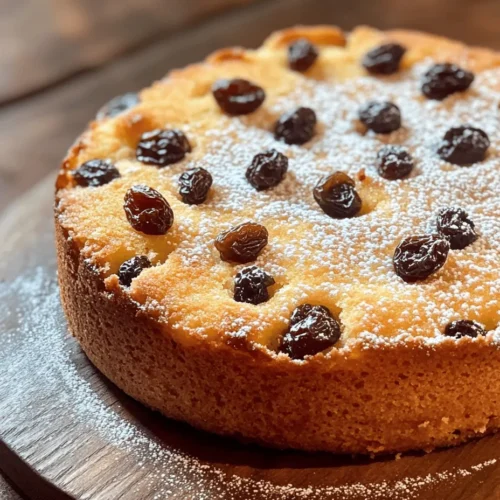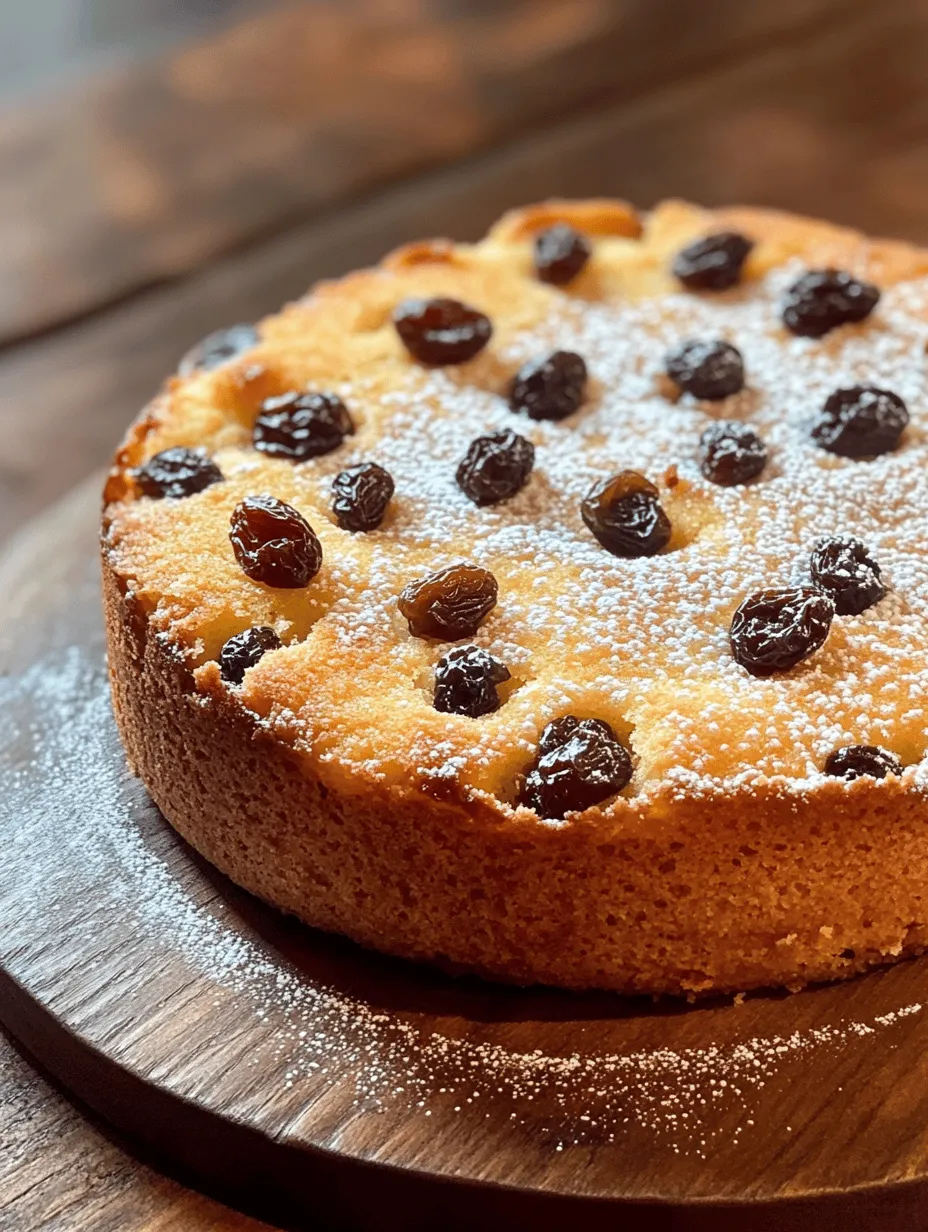Introduction
In the world of desserts, few treats evoke the warmth and nostalgia of family gatherings quite like the Besbes Cake. Originating from the rich culinary traditions of North Africa, specifically Algeria, this cake is renowned for its unique texture and delightful flavor. Besbes Cake is not just a dessert; it is a symbol of celebration, often enjoyed during festive occasions, family reunions, and special events. The cake’s name can be traced back to the region of Béjaïa, where it has been cherished for generations.
What makes Besbes Cake particularly special is its simple yet wholesome ingredients that come together to create a moist, tender dessert. The combination of semolina and all-purpose flour gives this cake its characteristic grainy texture, while the rich flavors of yogurt, sugar, and subtle hints of vanilla elevate it to a delightful treat. Whether served at a birthday party, a holiday feast, or a casual afternoon tea, the Besbes Cake is sure to impress your guests and family alike.
In this article, we will guide you through the process of making this delicious cake, exploring its key ingredients and their roles in achieving the perfect dessert. From the initial mixing to the final bake, you’ll discover how each component contributes to the overall appeal of the Besbes Cake.
Understanding the Ingredients
Semolina and All-Purpose Flour
At the heart of Besbes Cake lies the combination of semolina and all-purpose flour, each playing a pivotal role in shaping the cake’s texture and flavor. Semolina, made from durum wheat, is coarser than regular flour, lending a unique grainy quality to the cake. This ingredient not only adds a distinct texture but also enhances the cake’s flavor profile, giving it a nutty undertone that pairs beautifully with the other ingredients.
All-purpose flour, on the other hand, acts as a binding agent, providing the structure needed for the cake to rise and hold its shape. The balance between semolina and all-purpose flour is crucial; too much of either can lead to an undesired texture. The right combination will yield a cake that is light yet has enough density to feel satisfying on the palate.
Sweetness from Sugar
Sugar serves multiple purposes in the Besbes Cake recipe. Primarily, it adds sweetness, enhancing the overall flavor and making the cake enjoyable for all palates. Additionally, sugar plays a critical role in moisture retention, helping to keep the cake soft and tender throughout its shelf life. The balance of sugar is essential—too little can result in a bland cake, while too much can lead to an overly sweet outcome.
For those looking to substitute traditional sugar, there are a variety of alternatives available. Honey, agave syrup, or even coconut sugar can be used, but keep in mind that these alternatives may alter the cake’s texture and flavor slightly. Adjustments to the liquid content may also be necessary depending on the sweetener chosen.
Dairy Elements: Yogurt and Milk
Yogurt is another key ingredient in Besbes Cake, known for its ability to enhance moisture and tenderness. The lactic acid in yogurt not only contributes to the cake’s soft texture but also adds a slight tang that balances the sweetness from the sugar. This ingredient is crucial for achieving that melt-in-your-mouth consistency that makes Besbes Cake so beloved.
Milk, whether whole or low-fat, also plays an important role in the recipe. It helps to balance flavors and adds a creamy richness that complements the other ingredients. The combination of yogurt and milk ensures that the cake remains moist and flavorful; each bite is a delightful experience of creamy goodness.
Fat Content: Vegetable Oil
The source of fat in Besbes Cake comes from vegetable oil, which is essential for creating a moist and tender crumb. Unlike butter, which can solidify when cooled, oil remains liquid at room temperature, ensuring the cake stays soft and enjoyable to eat even after a few days. The use of oil also allows for a lighter cake, making it a popular choice for those who prefer a less dense dessert.
Should you wish to explore alternatives to vegetable oil, options such as melted coconut oil or unsalted butter can be used. However, keep in mind that these alternatives may slightly change the flavor profile and texture of the cake, so adjustments may need to be made to achieve the desired result.
Eggs as a Binding Agent
Eggs are a fundamental ingredient in many baking recipes, and Besbes Cake is no exception. They serve as a binding agent, helping to hold the ingredients together while also contributing to the cake’s structure and richness. The protein in eggs aids in the rising process, creating a light and airy texture that is essential for this cake.
For those following a vegan diet or with egg allergies, there are several alternatives that can be used in place of eggs. Flaxseed meal mixed with water, applesauce, or commercial egg replacers can provide similar binding properties, ensuring that your Besbes Cake remains delectable without the use of animal products.
Baking Powder and Salt
The role of baking powder in the Besbes Cake recipe is to create a chemical reaction that produces carbon dioxide, allowing the cake to rise during baking. This is crucial for achieving a fluffy texture, making the cake light and enjoyable. It’s important to use fresh baking powder, as an expired product can lead to a dense cake that fails to rise properly.
Salt, often overlooked in baking, is a vital ingredient that enhances the flavors of the cake. It helps to balance the sweetness and can elevate the overall taste experience. A pinch of salt is all that’s needed to make the flavors pop without being overpowering.
Flavor Enhancers: Vanilla Extract and Lemon Zest
To elevate the flavor profile of Besbes Cake, vanilla extract is incorporated into the mixture. This ingredient adds depth and warmth, rounding out the sweetness and enhancing the overall taste experience. A good quality vanilla extract is recommended, as it can significantly impact the flavor of the finished cake.
While not always included, lemon zest can also be added for a touch of freshness and aromatic quality. The zest provides a bright contrast to the cake’s sweetness, making each bite feel refreshing. If you’re a fan of citrus, consider adding a teaspoon of lemon zest to your batter for an invigorating twist.
Optional Ingredients: Raisins
For those who enjoy a bit of texture and extra sweetness, raisins can be a delightful addition to Besbes Cake. These dried fruits add chewiness and bursts of sweetness that complement the cake’s other flavors. If you choose to include raisins, be sure to fold them gently into the batter to prevent them from sinking to the bottom during baking.
As you embark on the journey of making Besbes Cake, understanding these key ingredients will empower you to create a dessert that is not only delicious but also reflective of the rich cultural heritage it represents. Now that we’ve explored the essential components, let’s dive into the step-by-step instructions to bring this delightful cake to life.

Suggestions for Other Mix-Ins or Substitutions
While the classic Besbes Cake is a delightful treat on its own, feel free to customize it to suit your taste preferences or dietary needs. Here are some suggestions for mix-ins and substitutions that can elevate your cake experience:
1. Nuts: Chopped walnuts or almonds add a delightful crunch. You can toast them lightly for an enhanced flavor.
2. Dried Fruits: Incorporating dried fruits like raisins, apricots, or cranberries can add natural sweetness and a chewy texture.
3. Chocolate Chips: For a chocolatey twist, fold in semi-sweet or dark chocolate chips. This will make the cake richer and more indulgent.
4. Citrus Zest: Adding lemon or orange zest can brighten the flavor profile, giving a refreshing contrast to the sweetness.
5. Spices: A pinch of cinnamon or nutmeg can add warmth and depth to the cake.
6. Gluten-Free Options: To make a gluten-free version, substitute all-purpose flour with a gluten-free flour blend. Ensure the blend contains xanthan gum for better texture.
7. Dairy-Free: Use almond milk or oat milk instead of regular milk and replace butter with coconut oil or dairy-free margarine for a vegan-friendly option.
These suggestions allow you to personalize your Besbes Cake, making it a unique creation for your family or guests.
Step-by-Step Instructions for Preparing Besbes Cake
1. Gather Your Ingredients
Before you start baking, ensure all ingredients are at room temperature. This includes eggs, milk, and butter, which helps in achieving a uniform batter.
2. Preheat the Oven
Set your oven to preheat at 350°F (180°C). Preheating is essential for even baking, ensuring that the cake rises properly and develops a beautiful golden crust.
3. Grease and Prepare the Cake Pan
Choose a 9-inch round cake pan or a loaf pan. Grease the pan generously with butter or baking spray, and dust with flour, tapping out the excess. This step is crucial to prevent the cake from sticking to the pan.
4. Mix the Dry Ingredients
In a medium bowl, whisk together 2 cups of all-purpose flour, 1 tablespoon of baking powder, and 1/2 teaspoon of salt. This step ensures that the leavening agent is evenly distributed throughout the flour.
5. Cream the Butter and Sugar
In a large mixing bowl, using an electric mixer, beat 1 cup of softened butter with 1 cup of granulated sugar until light and fluffy, about 3-5 minutes. This process incorporates air into the batter, which is vital for a light texture.
6. Add Eggs and Milk
Add 3 large eggs, one at a time, mixing well after each addition. Then, pour in 1 cup of milk and 1 teaspoon of vanilla extract, mixing until well combined. Scrape down the sides of the bowl to ensure everything is incorporated.
7. Combine Wet and Dry Ingredients
Gradually add the dry ingredient mixture to the wet ingredients, mixing on low speed or folding gently with a spatula. This gentle folding method is crucial to maintain the airiness of the batter. Stop mixing as soon as you see no flour streaks; overmixing can lead to a dense cake.
8. Pour and Level the Batter
Pour the batter into the prepared cake pan. Use a spatula to level the surface, ensuring even baking.
9. Bake
Place the cake in the preheated oven and bake for 30-35 minutes, or until a toothpick inserted into the center comes out clean. Baking times can vary based on your oven, so keep an eye on it as it approaches the 30-minute mark.
10. Cool the Cake
Once baked, remove the cake from the oven and let it cool in the pan for about 10 minutes. Carefully turn it out onto a wire rack to cool completely. This step is important as cooling on a wire rack prevents the bottom from becoming soggy.
Baking Methodology
Preheating the Oven
Preheating your oven is a critical step in baking. It allows the cake to rise properly from the moment it enters the oven, leading to a uniform texture and color. Ensure your oven reaches the desired temperature before placing your cake inside.
Greasing and Preparing the Cake Pan
Using the right technique to prepare your cake pan prevents frustrating sticking. After greasing, consider lining the bottom with parchment paper for added protection. This guarantees that your cake will release effortlessly after baking.
Mixing Techniques
Incorporating wet and dry ingredients requires a gentle touch. The folding method helps to retain air in the batter, which is key to achieving a light and fluffy cake. Use a spatula to lift the batter from the bottom of the bowl and fold it over the top, repeating until just combined.
Baking Time and Temperature
Every oven is different; it’s beneficial to familiarize yourself with your appliance. If your cake is browning too quickly, consider placing a piece of aluminum foil over the top during the last few minutes of baking. Always check for doneness by inserting a toothpick into the center; it should come out clean or with a few moist crumbs attached.
Cooling and Serving Suggestions
Cooling your Besbes Cake properly is essential for maintaining its texture. Allow the cake to cool completely on a wire rack. This helps avoid a gummy texture that can occur if you slice it while still warm.
When it comes to serving, the Besbes Cake is versatile. Here are a few suggestions:
– Plain: Enjoy it as is, allowing the lovely flavors to shine through.
– With Whipped Cream: A dollop of freshly whipped cream can add a light and airy contrast to the cake’s richness.
– Garnished with Fresh Fruits: Fresh berries, slices of kiwi, or citrus segments can brighten the presentation and add a refreshing element.
– Pairing with Beverages: This cake pairs beautifully with tea or coffee. The subtle flavors complement the robust notes of your favorite beverage.
Cultural Significance of Besbes Cake
Besbes Cake is not just a dessert; it holds cultural significance in various celebrations and traditions. Often enjoyed during festive occasions or family gatherings, it represents hospitality and warmth. In many communities, sharing this cake symbolizes love and togetherness.
Personal anecdotes often accompany the enjoyment of Besbes Cake. For instance, families may have their unique recipes passed down through generations, each adding their twist. In some cultures, variations of the recipe emerge, reflecting local ingredients or culinary traditions, such as the addition of regional spices or nuts.
Different regions may also have unique names or presentations for this beloved cake, showcasing the diversity of culinary practices and the shared joy of baking.
Nutritional Information
Understanding the nutritional content of your Besbes Cake can help you enjoy it mindfully. A standard serving (one slice) typically contains approximately:
– Calories: 250-300
– Fat: 12-15 grams
– Carbohydrates: 35-40 grams
– Protein: 3-4 grams
While this cake is a treat, it can be enjoyed in moderation as part of a balanced diet. Using alternatives like whole grain flour or reducing sugar can enhance its nutritional profile without sacrificing flavor.
Conclusion
In summary, the Besbes Cake is a delightful dessert that combines simplicity with rich flavors and textures. Its ease of preparation makes it an inviting choice for both novice and experienced bakers. Whether enjoyed plain or dressed up with toppings and mix-ins, it brings joy and warmth to any occasion.
As you embark on your baking adventure, don’t hesitate to explore the various suggestions and personal touches to make this recipe your own. The joy of baking lies not just in the final product, but in the process of creating and sharing it with loved ones. So gather your ingredients, preheat your oven, and get ready to enjoy the wonderful flavors of Besbes Cake.


